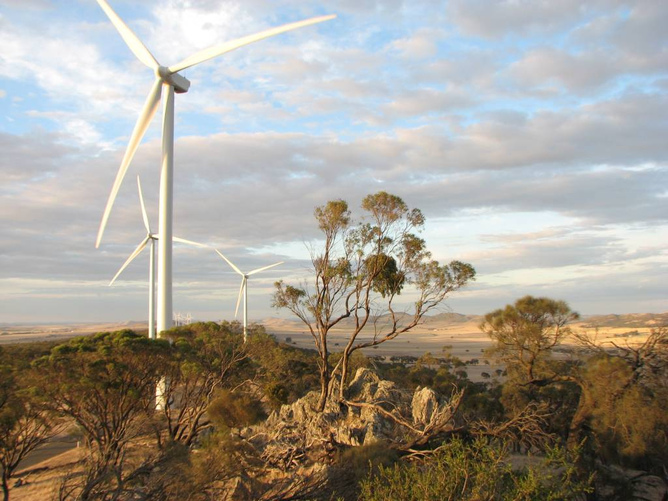 Guest Post by Graham Palmer. Graham recently published the book “Energy in Australia: Peak Oil, Solar Power, and Asia’s Economic Growth” (“Springer Briefs in Energy” series).
Guest Post by Graham Palmer. Graham recently published the book “Energy in Australia: Peak Oil, Solar Power, and Asia’s Economic Growth” (“Springer Briefs in Energy” series).
Germany’s Energiewende as a model for Australian climate policy? A critical review.
Graham Palmer, June 2014
The Energiewende is the world’s most audacious energy policy experiment and comprises Germany’s biggest infrastructure project since post-Second World War reconstruction. No other national energy policy has attracted such international interest, nor polarised opinions. Energiewende – literally translated as “energy turn” or “energy transition” – has two main elements – a withdrawal from nuclear power and an increase in the penetration of renewable energy via a feed-in tariff (FiT) system. The FiT scheme, originally introduced in 1991 and enshrined in the EEG Act, is based on the principle of protecting renewable investors with a guaranteed grid connection and revenue, with differing returns based on the type of renewable generator. In theory, this was also supposed to encourage innovation, although most of the benefits have come through volume manufacture driving prices down the cost curve, and the benefits of “learning by doing”.
But for Germany, this is about much more than their national energy policy. This is Germany’s Apollo space program. If it were to work, Germany would be the world leader in renewables integration with a potential multi-billion Euro export industry. But unlike the essentially technical challenge of putting man on the Moon, the Energiewende faces unprecedented challenges beyond merely the technical. A nation’s standard of living is underpin by the capital and labour productivity of its energy systems, along with a sufficiently high net-energy.
While the planned German nuclear exit following Fukushima was, at face value, an over-reaction given the lack of seismic and tsunami risk, German ambivalence towards nuclear has been building since the 1970s. The student protests of the late 1960s produced a fusion of anti-Americanism, anti-capitalism, and anti-nuclear, where nuclear power became aligned with distrust of capitalism and militarism. The “laughing sun” symbol appeared everywhere – Atomkraft? Nein Danke (Nuclear power? No thanks!) – and became recognizable as an expression of “polite dissent” as it became cool to be anti-nuclear [1].
 This alignment was not altogether surprising – the legacy of the Holocaust and the Second World War, West Berlin as the focal point of the Cold War, with Germany hosting NATO Cruise and Pershing missiles along with American, British and French forces. These fears became entrenched through anti-nuclear activism by scientists such as Klaus Traube Traube, who was originally a proponent of nuclear power, but became one of the most prominent and influential critics [2]. And it was also the local “Citizens’ Initiatives” organised around local issues that formed the basis of the grassroots campaigns, such as opposition to the siting of a new nuclear power plant in the wine-growing village of Wyhl in 1975 [2].
This alignment was not altogether surprising – the legacy of the Holocaust and the Second World War, West Berlin as the focal point of the Cold War, with Germany hosting NATO Cruise and Pershing missiles along with American, British and French forces. These fears became entrenched through anti-nuclear activism by scientists such as Klaus Traube Traube, who was originally a proponent of nuclear power, but became one of the most prominent and influential critics [2]. And it was also the local “Citizens’ Initiatives” organised around local issues that formed the basis of the grassroots campaigns, such as opposition to the siting of a new nuclear power plant in the wine-growing village of Wyhl in 1975 [2].
Similarly, the Australian anti-nuclear movement grew out of the 1960s protest movement but had a unique Australian flavour [3]. This was the period of the Vietnam War, land rights for Aboriginal people, French nuclear testing at Mururoa atoll, the aftermath of Maralinga weapons tests, and the hero of the left, Gough Whitlam. This was also the period before the functional separation of state-sponsored weapons programs and commercial nuclear vendors – the choice of the British Steam Generating Heavy Water Reactor (SGHWR) for the proposed Jervis Bay nuclear power plant (NPP) in the late 1960s, together with the reluctance to sign the nuclear non-proliferation treaty, suggested a strategy of retaining a future option for dual-use capability [4].
Upon winning government in 1972, Whitlam signed the nuclear non-proliferation treaty (NPT), banned nuclear power, and introduced universal higher education. Suddenly, it became de rigueur in academia and the political left to oppose nuclear power. This earlier period defined Australian anti-nuclear canon, which remained as unchallenged doctrine for decades. Jim Green’s [5] introduction of the term “radiation racism” in the late 1990s, representing a drawing together of Green-left activism, uranium mining, Aboriginal land rights, weapons testing, and nuclear power, typifies this enduring but now archaic narrative.
 Below is a new, detailed critique by Dr
Below is a new, detailed critique by Dr  Introduction
Introduction


